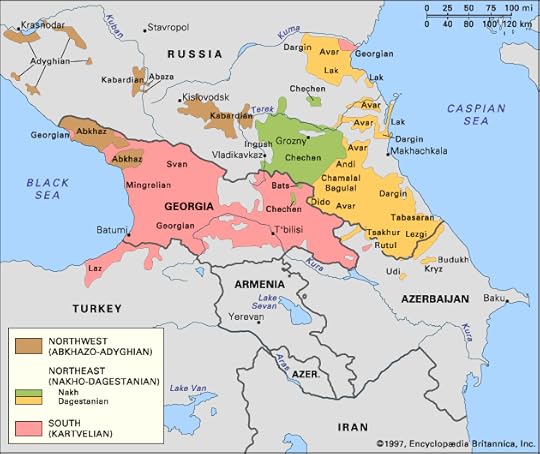The Caucasian Languages

Episode 12 The Caucasian Languages
Language Families of the World
Dr John McWhorter
Film Review
The Roman Historian Pliny the Elder and the Greek navigator Timosthenes were the first to write about the Caucasus region in Eastern Europe. It was a popular tourist destination for wealthy Roman families.
According to McWhorter, the Caucasus is home to three or four dozen different languages belonging to three different language families.
Northwestern Caucasian (includes the Kabardean and Abknaz languages)Northeastern Caucaian (includes Lezgian, Tsez, Archi and Avar languages)Southern Caucasian (with Georgian the best example)The term “Caucasoid” (as an archaic racial classification) originated with the work of Friedrich Blumenbach, who identified a Georgian skull as “Caucasoid” to distinguish it from “African” or “Mongoloid.”
McWhorter asserts that the multiplicity of Caucasian languages relates mainly to high mountain ranges that isolated language groups. In general languages spoken at high altitudes are always more complicated. It’s typical for invading tribes to chase indigenous groups into the mountains, where they remain isolated. In contrast, languages spoken in lowland villages tend to become simplified when invaders learn them as a second language.
In any case all Caucasian languages remained extremely complicated because few outsiders wanted or needed to learn them. Northwest Caucasian languages have nouns with extremely complicated case markings, Northeast Caucasian languages have extremely complex verb endings and South Caucasian languages are full of prefixes, suffixes and infixes that subtly alter the meaning of words.
Inguish, a Northeast Caucasian language, has six genders, 1 1/2 vowels (“a” and a schwa sound), and ejective consonants. According to McWhorter, ejective consonants are common at high altitudes (also found in the Andes, and Ethiopian mountains) because it’s easier to compress air when it’s thinner.
*An ejective consonant is an unvoiced consonant associated with a click in the back of the mouth. Increasingly some English speakers make this clicking sound when “k” occurs at the end of the word.
Film can be viewed free with a library card on Kanopy.
https://www.kanopy.com/en/pukeariki/watch/video/6120000/6120026
The Most Revolutionary Act
- Stuart Jeanne Bramhall's profile
- 11 followers



